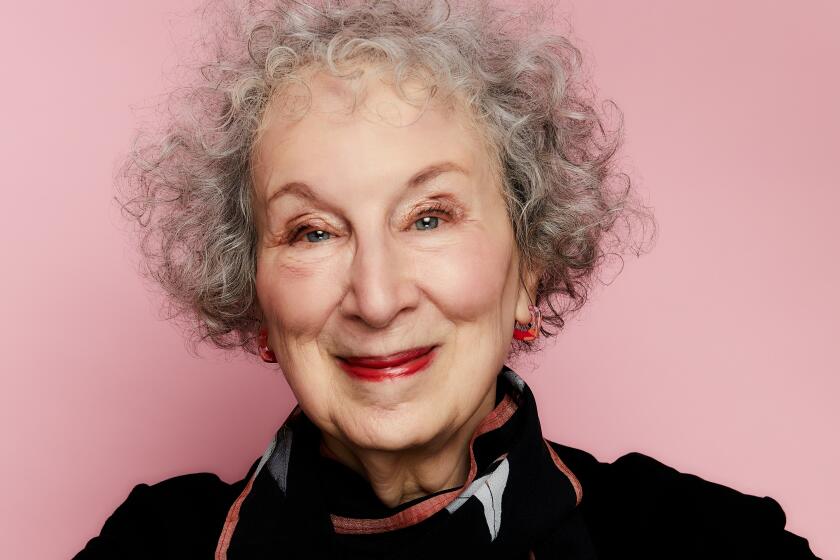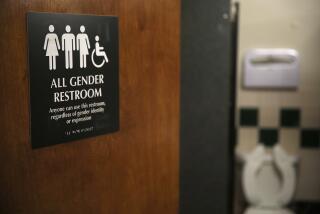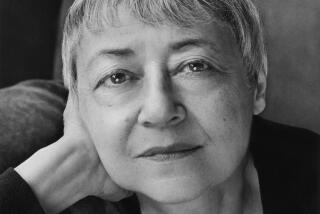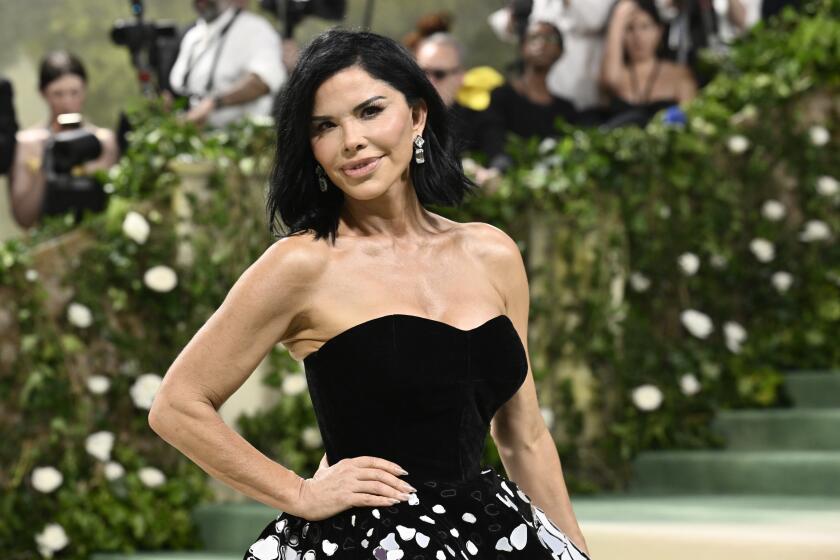Permit Margaret Atwood to explain ‘The Wizard of Oz’
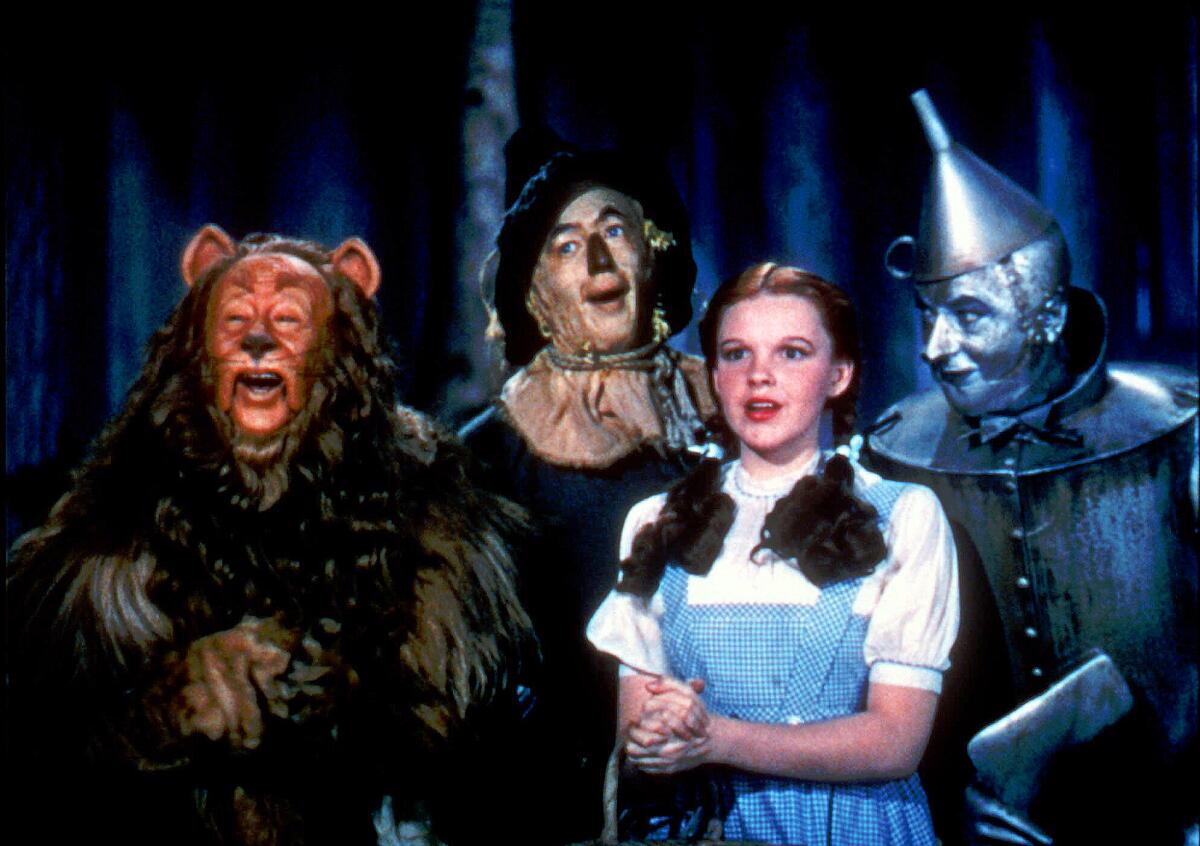
Next week sees the publication of “Burning Questions,” a new collection of nonfiction pieces by Margaret Atwood. In the course of speaking to The Times about her fearless opinions for a feature profile, the author of “The Handmaid’s Tale” explained her preoccupation with L. Frank Baum’s “The Wonderful Wizard of Oz,” offering a typically nimble riff on its expression of anxieties over feminism and what she calls the “woman question.” The conversation has been slightly edited.
It’s a very iconic and interesting story, which of course I read as a small child.
OK. So let’s think about what it’s got in it. It was written around the time that rights for women was a real issue. Everybody was thinking about it. And what does “The Wizard of Oz” have in it? It’s got four witches, who have real witchy power. One gets squashed by the house. And one of them is the Wicked Witch of the West who appears in the film with a green face and apparently scared the pee out of Neil Gaiman as a child.
Literally scared the pee out of him?
I didn’t ask. [laughs] I didn’t get granular on the details. But I was on stage with him and I did my witch voice and he said, “Don’t do that! Don’t do that! That really scared me as a child.” You’ll notice that he’s channeled it quite a bit in some of his own writing, most particularly “Coraline.” Anyway, there’s these four witches, and two of them are good and two of them are bad. The other magic person, once she gets the slippers, is Dorothy — also a female person. Then there’s also the girl soldiers in the Emerald City. Remember them?
Margaret Atwood unpacks the essays, speeches and appreciations in her deep and deeply entertaining new nonfiction collection, ‘Burning Question.’
I don’t.
I’m not sure they’re in the film. They’re definitely in the book, illustrated, they look sort of like drum majorettes. So the Emerald City of Oz is a utopia. Everybody in it is happy. But it’s based on an illusion. OK. Let’s look at the male people in the book. They are the Cowardly Lion, the Tin Woodman and the Scarecrow. They go with Dorothy because each of them feels he lacks something. One of them lacks courage, one of them lacks brains, and one of them lacks heart. So we have three deficient male characters going to see the Wizard, hoping that they will get these things, but the Wizard turns out to be a fraud. [laughs] So actually none of the male characters in the book have any real magic powers. The Wizard has only succeeded in keeping the bad witches at bay by making people think he has magic powers. Don’t you think that’s interesting? I certainly do. [laughs]
So is this turn-of-the-century insecurity about gender roles? I would say it is. Early on, when I was writing my thesis for Harvard in supernatural female figures in fiction, naturally I was interested in these witches. In 19th century fiction particularly, they always have to do with what they called “the woman question.”
What is the woman question?
Now let’s just dial back in history, long, long ago before you were born. Women didn’t have voting rights, they didn’t have rights to higher education. They couldn’t go to art schools because they might see naked women, always a shock. They didn’t have property rights unless those had been specially arranged for them by their male progenitors. That’s the plot of a lot of 19th century novels. So the woman question was about: How many of these things should they be permitted? And it ranged all the way from higher education and votes to just, you know, what kinds of schools they should be allowed into. Certainly not medical schools! They might see naked women.
The author of “The Handmaid’s Tale” and “The Testaments” unpacks the way “all speculative fiction writers are writing about the present and the past.”
Each woman I know has seen at least one naked woman. I mean even in the Middle Ages, a woman would change her own clothes.
You’d think! Think again. You could live a whole life without ever seeing your own body. Anyway, there was a big debate about Mrs. Bloomer, who wanted more relaxed clothing for women. It was actually seriously put forward that if you took away their corsets women, being so much like jellyfish, would just sort of subside into a puddle on the floor; they needed bolstering up. There was also an idea that if you gave them higher education, all the blood would come out of their generative organs into their heads and they wouldn’t be able to reproduce. You think this is stupid, don’t you?
No, I think it’s hysterical!
Yes. Well I was a Victorianist once upon a time and these arguments were seriously put forward to limit women’s access to public life. And then there was the big bicycle revolution. When bicycles came in, women could get on bicycles and go off to places where they weren’t supervised, which as you can readily imagine was deeply immoral. So there was a lot of writing against [it], and I’m sure the same argument was made about automobiles when they came along. And I refer you to zippers, which were preached against as being immoral.
These are just some aspects of it. How much power should women be allowed and if they got it, would they seriously misuse it? That was the argument. Would they turn men into these deficient creatures that you see in “The Wizard of Oz” with no magical powers? Who had to fall back on pretending to have magical powers? So to me, just as in H.G. Wells’ “The Island of Doctor Moreau,” deep anxieties about the woman question were being expressed in these fantasies.
‘The Testaments’ is the much-awaited sequel to Margaret Atwood’s “The Handmaid’s Tale.”
Kellogg is former books editor of The Times.
More to Read
Sign up for our Book Club newsletter
Get the latest news, events and more from the Los Angeles Times Book Club, and help us get L.A. reading and talking.
You may occasionally receive promotional content from the Los Angeles Times.
